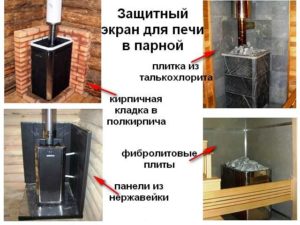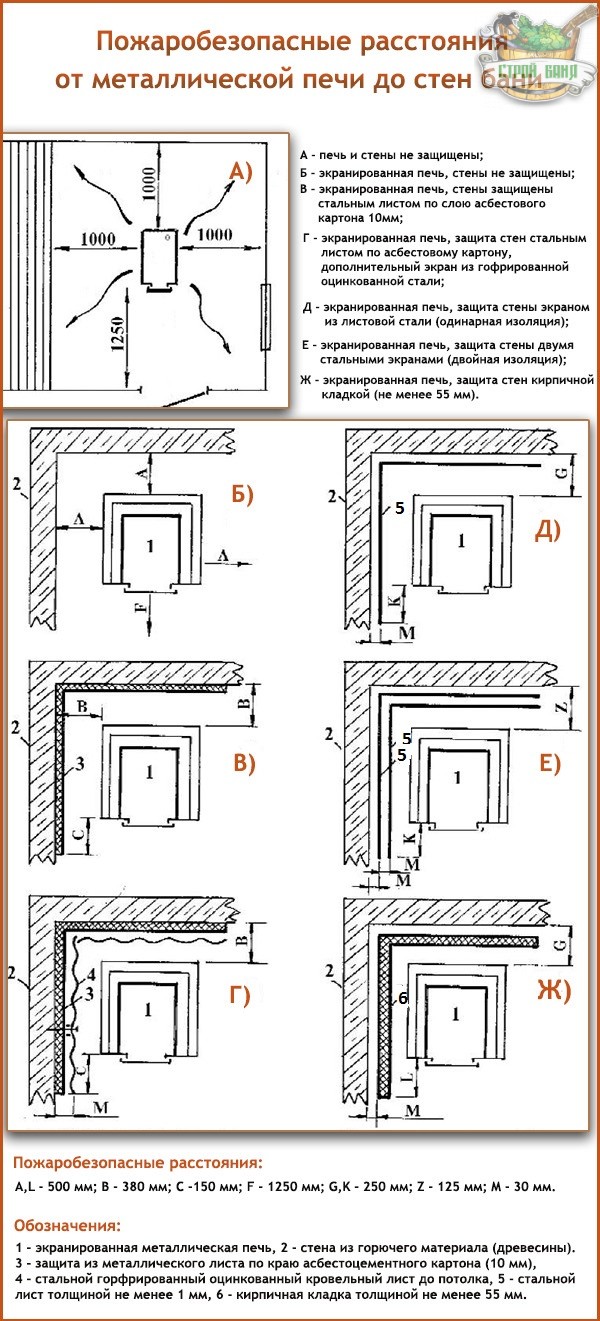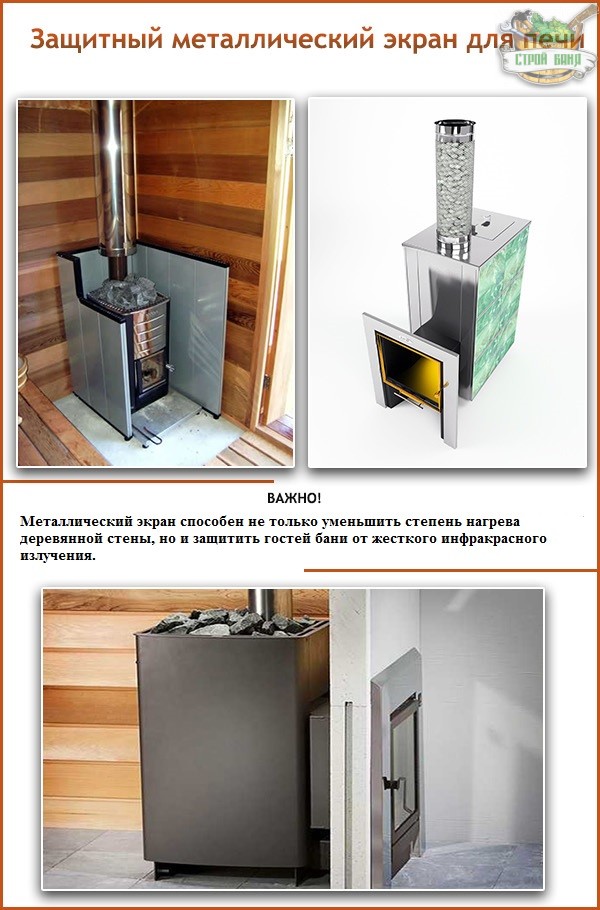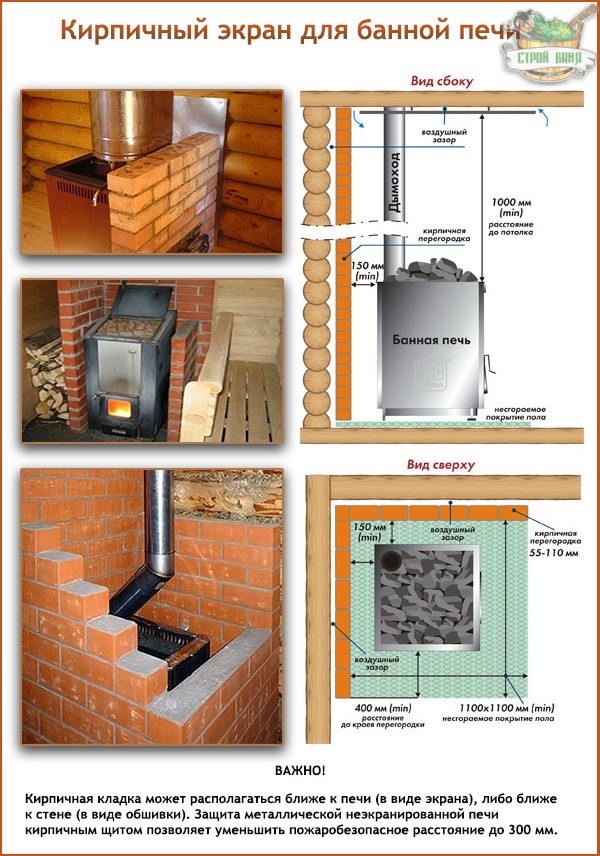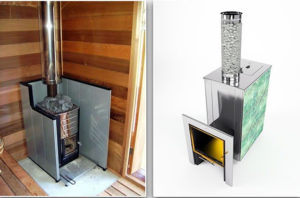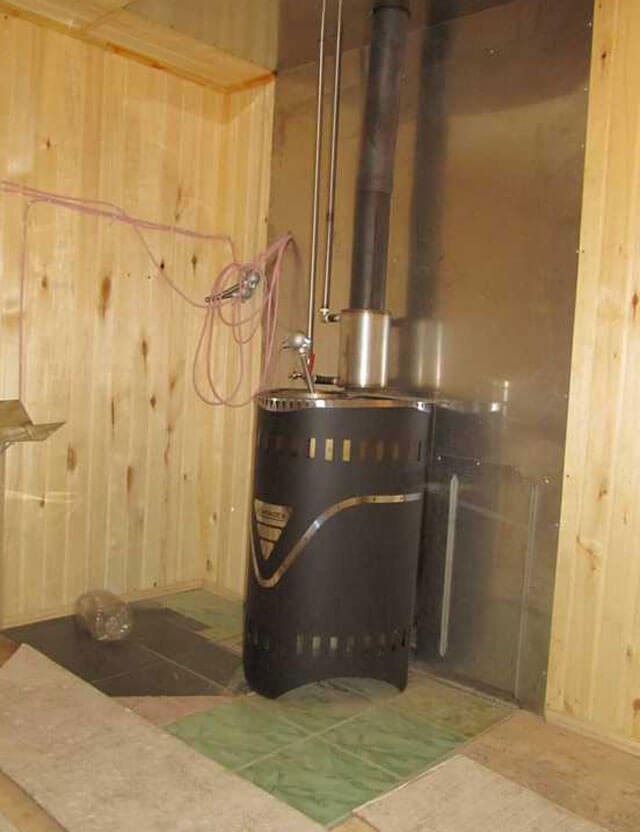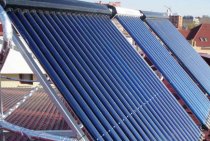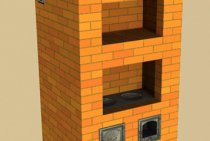Screen protector selection
There is a large selection of specialized materials from which a stove fence in a wooden bath can be made. First of all, we are talking about:
- natural stone;
- Basalt slabs;
- metal ceilings;
- Decorative shields.
It is worth focusing on a number of parameters, including price, durability and permissible operating conditions. Due to frequent temperature changes and high humidity in the room, cheap shields can fail for several seasons.
In such conditions, natural stone shows itself best. Most often, a brick is used for the screen of a bath stove, since with its help you can independently lay out the necessary shape of the future protective structure. In the course of work, you can easily make any adjustments to make the bath more comfortable for use. Furnace screen to your bath hands - this is the best thing you can do for a great and safe holiday.
Additional aspects
It should be understood that not in all situations a protective screen is generally required. For example, for brick ovens with an initially protected firebox, fences are not required. If the screen needs to be installed, then red ceramic materials are selected for it, capable of withstanding severe temperature changes and exposure to moisture.
Conclusion
A do-it-yourself sauna stove screen is an important sauna design that can prevent accidental burns and balance the operation of the stove. By implementing one of the proposed schemes, you can achieve a combination of protection efficiency, good functionality of the stove and good visual qualities of the entire system.
Heat-resistant screens for sauna stoves have been used relatively recently, since today the stove is a separate device that is not part of the bath. In the past, stoves were built of stone, so there was no need for additional fencing for the stove in the steam room.
Today, a brick screen is often created for a metal furnace in a bath, since the metal conducts heat energy well, so it can heat up to very high temperatures. Any touch to the metal case causes severe burns that do not heal for many weeks. Thus, the protective screen for the stove in the stainless steel bath makes the rest safe.
When is protection needed?
The need to install protective skins and screens does not always arise. If a fireproof distance is maintained between the stove and the nearest combustible surface, no additional protection is needed. At this distance, the IR rays scatter, weaken, and the amount that the wooden wall receives can no longer damage it.
It is believed that the safe distance from the wall to the brick oven (laying a quarter of a brick) is at least 0.32 m, from the wall to the metal furnace (not lined) - at least 1 m. For a metal furnace lined from the inside with brick or fireclay, the distance decreases to 0.7 m.
Thus, compliance with fire distances is more possible in large baths, where the issue of saving space is not relevant. In family steam rooms, where every centimeter of space counts, installing a stove 0.3-1 m from the nearest walls is not practical. In this case, the safety distances established according to the norms must be reduced with the help of screens and skins.
Protective screens around the oven
Protective screens are insulation shields that cover the side surfaces of the furnace and reduce the intensity of thermal radiation. Screens are metal and brick. As a rule, they are used for metal furnaces.
Method #1 - metal screens
The most common protective screens are factory-made steel or cast iron sheets. They are installed around the furnace, at a distance of 1-5 cm from the walls of the firebox. Depending on the need to insulate one or another side of the furnace, you can purchase side or front (front) screens. Many metal furnaces are initially made with protective screens in the form of a protective casing.
Protective screens reduce the temperature of external metal surfaces to 80-100°C and, accordingly, reduce the fireproof distance to 50 cm. The total distance from the firebox to the wall (together with a gap of 1-5 cm) will be 51-55 cm.
Installing protective screens is not difficult. Due to the presence of legs, metal shields are easily attached to the floor with bolts.
Method # 2 - brick screens
A brick screen can cover all the side surfaces of a metal furnace, representing its outer skin. Then the stove will be in a masonry casing. In another case, a brick screen is a wall that separates the furnace and the flammable surface.
For laying a protective screen, a full-bodied fireclay brick is used. The binder is cement or clay mortar. It is recommended to lay in half-brick (thickness 120 mm). But, with a lack of material, it is possible to allow the wall to be made a quarter of a brick (60 mm thick), although in this case the heat-insulating properties of the screen will be reduced by half.
Small holes are left in the lower part of the shield (sometimes with furnace doors) for air convection between the brick wall and the stove.
Brick walls of the screen must end at least 20 cm above the top surface of the furnace. Sometimes laying is carried out to the very ceiling.
The brick screen is not installed close to the walls of the furnace, the optimal distance is 5-15 cm. The acceptable distance from the brickwork to the flammable wall is 5-15 cm. Thus, the use of a brick screen allows you to reduce the distance from the furnace to the wooden wall to 22-42 cm (oven - ventilation gap 5-15 cm - brick 12 cm - ventilation gap 5-15 cm - wall).
How to make a protective screen for a sauna stove with your own hands
Be sure that there is nothing difficult in creating a protective screen for a bath with your own hands.
It is recommended to prepare all the necessary materials and tools in advance, otherwise it will significantly slow down the progress of work. The presence of everything you need will help not only not to stop construction and installation, but will not bring down the general "engineering idea".
from brick
Brick and concrete mixture are used as the main working material. Mixtures that are designed for operation at high temperatures should be used. If you do not want to spend money on its purchase, then you should add clay to the standard mixture. This will strengthen the future design.
When calculating, three parameters must be taken into account to determine the required amount of brick, namely:
Keep in mind that between the masonry it is necessary to calculate an additional few millimeters between the bricks for the concrete mix.
- The manufacturing process is no different from laying bricks. All that needs to be done is to create a kind of brick "fence" around the furnace of the required height.
- After laying, at least 5-7 days are required for the mortar to dry completely. A longer period is required due to the closed space - the solution dries worse in it.
- After completing the last stage of work, you should additionally check the strength of the masonry. If necessary, additional basalt slabs can be installed on top of the brick to provide greater security.
metal
Metal structures are more durable, as this material is easier to tolerate temperature changes. The complexity of installation and the price of such slabs are somewhat higher than brick counterparts.
Work will require sheet metal: zinc sheets or steel, as well as additional mineral insulating materials that do not burn and melt at high temperatures. A welding machine and sheet fastening mechanisms are also required.
The thickness of the insulating material should be at least two centimeters, and the height of the shield should be 5-10% more than the height of the furnace. Remember that the wall of the structure is doubled, so eight sheets of metal are required to complete the job.
Step by step instructions for making
- Prepare all the necessary material and consumables;
- Place the insulating material in an even layer on the sheet of metal;
- A second layer of metal is applied on top;
- Special fasteners are welded with a welding machine that hold the structure together.
- The sheets produced must be installed around the oven from all sides using fasteners.
- It is recommended to put insulation under the lower part to prevent unintentional charring of the floor and fire in the room.
Features of installing metal protection
The installation of a metal screen is usually carried out in such a way that a structure like a box is obtained. Outside is stainless steel or sheet metal coated with heat resistant paint. As a result, an air gap appears between the metal sheets, due to which good thermal insulation is provided.
There are holes in the lower part of the structure that provide air circulation and prevent overheating of the metal box. To implement such protection, one of two schemes can be used.
Scheme 1
A polished metal sheet is selected, which has much better heat dissipation. As a rule, such screens are used on the rear walls of the furnace, preventing heat loss. Of course, you should not mount this protection directly to the wall - the risk of fire from this will increase many times over.
For proper installation, it is required to place a non-combustible layer between the protection and the wall so that air space remains behind the sheet. There should also be a small distance from the protection to the floor - this allows air to blow over the screen, removing heat.
Scheme 2
To implement such a scheme, thermal insulation is first laid on the wall, and metal protection is already on top of it. The design will largely depend on the chosen insulation.
Depending on the selected thermal insulation, the arrangement of the protective screen will look like this:
- When using rolled material, the lining is created in such a way that the distance between the planks is slightly less than the width of the material. The insulation is placed between the planks and fixed with special dowels with a large cap.
- If, however, mineral cardboard or asbestos sheet is used as a heat-insulating material, then it must first be attached to the wall, and the metal sheet is fixed from above.
Conclusion
The importance of the aforementioned bath structure cannot be overestimated, so the design of this stage of construction should be carried out at the very beginning. Remember that the safety you provide is exactly the factor that will allow you to enjoy the sauna and your work for many years!. During the kindling of the bath, the surface of the furnace heats up to 300-400°C
At the same time, it begins to emit infrared rays and itself becomes a source of heating. The running heat is distributed throughout the steam room, but first of all it hits the walls adjacent to the stove. If the walls are wooden, then under the influence of high temperatures, their charring begins. And there is already close to the fire! The only truly effective way to insulate wooden walls from heat is to create protective screens and sheathing from non-combustible materials in the bath.
During the kindling of the bath, the surface of the furnace is heated up to 300-400°C.At the same time, it begins to emit infrared rays and itself becomes a source of heating. The running heat is distributed throughout the steam room, but first of all it hits the walls adjacent to the stove. If the walls are wooden, then under the influence of high temperatures, their charring begins. And there is already close to the fire! The only truly effective way to insulate wooden walls from heat is to create protective screens and casings from non-combustible materials in the bath.
